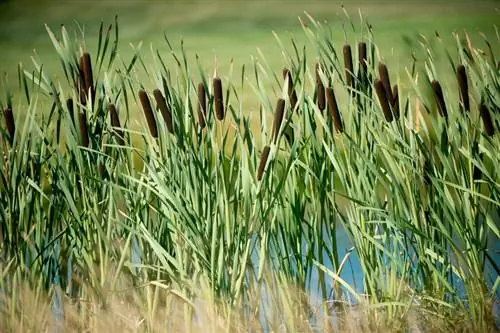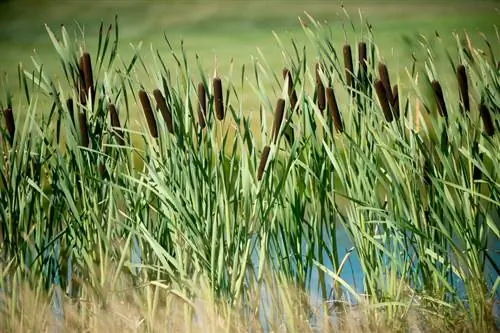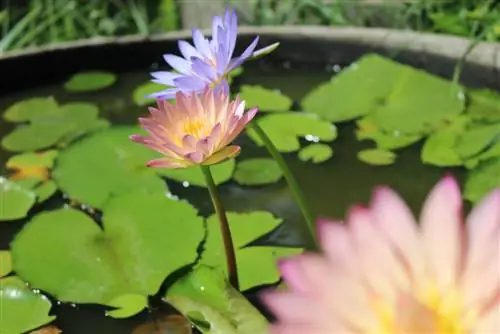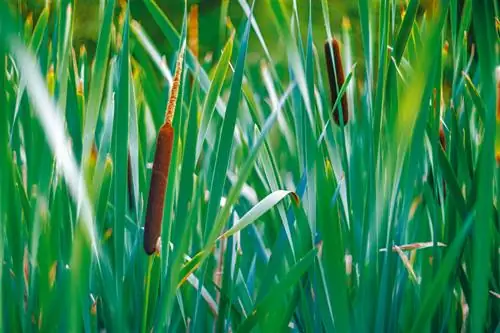- Author admin [email protected].
- Public 2023-12-16 16:46.
- Last modified 2025-01-23 11:20.
Although species such as the broad-leaved cattail (Typha latifolia) are not protected as plants in Germany and many other countries, the preferred locations with swampy ground can be part of protected areas. When choosing the right type of lamp cleaner for your own garden pond, the height of the respective species is usually the deciding factor.

What benefits do cattails bring to the garden pond and how do you care for them?
Cattails in the pond provide a habitat for rare animals, work against algae growth, support winter ventilation and provide shade. They require little care and should be cut back in autumn or spring. To prevent uncontrolled growth, we recommend using a plant basket.
Positive effects of cattails on the garden pond
As an aquatic and marsh plant, the cattail is not only a particularly decorative plant for designing your own garden, but when planted near a garden pond it also fulfills important tasks in the following areas:
- as a habitat for rare animals
- as a biological measure against strong algae growth
- for winter pond aeration
- for partial shading of the water surface
In relatively small and shallow garden ponds, the shadow cast by the thoughtfully placed cattail can ensure that the water heats up less in summer due to sunlight. In addition, many rare insects and reptiles find a protected habitat between the leaves and inflorescences of the cattail. If there is strong algae growth in your pond, you can use the cattail as a water clarifier, as it is a strong nutrient consumer. That's why it is often used in biological sewage treatment plants.
Secure the garden pond against rampant cattail populations
The cattail is usually planted in boggy locations or in the shallow water zone of garden ponds. Under good location conditions, it can spread unintentionally if it is not placed in an appropriate plant basket (€8.00 on Amazon). Other marsh plants on the garden pond, such as the marsh marigold, can easily be displaced by the cattail. On the other hand, species such as the reed, which are even more competitive than the lamp cleaner, are less sensitive.
Care for cattails on the pond
The cattail requires little to no care in the shallow water zone of a garden pond, as it neither needs to be watered nor fertilized here. For visual reasons and to encourage fresh growth in spring, the pennisetum is often cut back in autumn or early spring to around 15 centimeters above the water or soil surface.
Tip
If you are struggling with voles in your garden around the foil pond, you should think carefully about planting cattails. Since the small rodents are extremely fond of the starchy rhizomes of the cattail, their teeth can sometimes cause the pond liner to leak.






